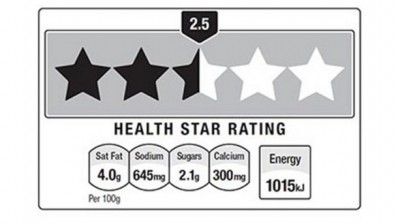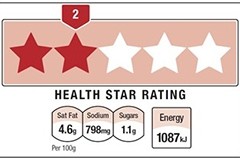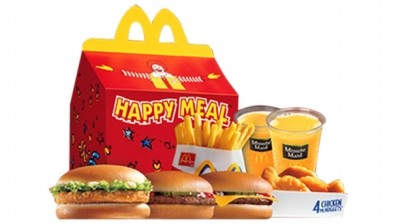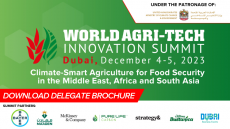Opinion
Junk food industry should prepare for plain and graphic label debate
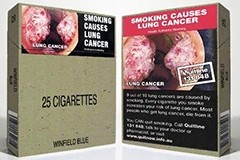
It certainly isn’t news that “smoking causes mouth cancer”, “quitting will improve your health” and “smoking causes peripheral vascular disease”, as the latest packs declare. What has done the trick, as far as health campaigners are concerned, is a combination of displaying the potential results of tobacco use, and reducing a smoker’s brand loyalty by making all packs appear the same.
For many armchair analysts, the move to introduce plain and graphic packaging has done wonders for public health; but for Libertarians, it has been yet another encroachment into society by the nanny state - something which has no business interfering with civil liberties. Whatever your viewpoint, it has been successful - anecdotally, at least - for the time being.
Now armed with tobacco packaging reform, where will the prohibitionists move next? Zero-nutrition food, of course, appears a likely leap. Food doesn’t only provide fuel for the human body, it also acts as an accelerating agent for the countless scare stories that make their way into the press each week that detail all the harm different products can do - just like smoking - over the long-term.
Aside from talk of “Frankenstein foods”, carcinogens, and even the recent stories of omega 3 increasing the risk of prostate cancer, the issue of packaged junk food is a very big deal as not only does it affect the individual, but also society as a whole - once again a little like smoking.
The parallels between junk food and tobacco are endless: the consumption of both often begins at an early age; both can be addictive, and often contain ingredients designed to increase the chances of addiction; both are both regularly consumed in social situations, giving rise to others joining in. What’s more, smoking and obesity together place great strain on health services and benefit from powerful lobby groups.
So why don’t we introduce plain and graphic labels on zero-nutrition snack products? What’s wrong with pictures of obese teens and toothless twentysomethings on the front of a high-carb, high-fat snack? For some, this is the natural nanny progression.
Otago University Business School marketing researcher Prof. Janet Hoek looked into the the subject last year and told The New Zealand Herald: “It makes sense to examine the potential [tobacco packaging] policies could have in reducing consumption of foods associated with obesity.”
This issue was again debated this week in Brisbane by a panel of food industry heavyweights at the Australian Institute of Food Science and Technology convention, during which Anne Astin, the institute’s president suggested the subject of plain labelling for junk food was destined be looked at.
“If our health system can't cope with the increasing incidence of lifestyle-related diseases, it's something we will have to consider as an option. The levels of intervention need to become stronger. Ultimately, it may come to plain packaging,” she said.
Piqued by Astin’s words, we asked Jemma O’Hanlon, an accredited practicing dietitian at Nutrition Australia’s Victoria division, for her thoughts.
“We need a comprehensive, coordinated and evidence-based approach to tackle the growing obesity rates in Australia, there is simply no one quick fix,” she said.
“But food should be enjoyed and we need to be careful about labelling foods as good and bad, or taking a restrictive approach to foods. Food is something that nourishes our bodies, and Nutrition Australia takes a positive, educational approach to encourage healthy eating behaviours,” she told us.
Dietitians Associations of Australia spokesman Alan Barclay, agreed, telling The Australian that implementing plain packaging would be an “extreme'' move that could lead to eating disorders.
“Treating foods like poison sets people up for disordered eating, and we shouldn't be treating food as good or bad. The definition of junk food is problematic - we all know what it means, but how would you pin it down?''
According to O’Hanlon, the authorities and industry should focus their efforts on encouraging consumers to eat the right foods, with labelling - incorporating the new health star rating - the standard for for nutrition-friendly goods.
“Clear and informative labelling is important to help consumers make better choices at the supermarket,” she said. “The new star rating system is one step in the right direction to empower consumers to make informed choices.
“We need to be focusing on encouraging the consumption of whole foods, and a variety of nutritious foods in the diet, and steering people away from those energy dense, nutrient poor options.”
At the Institute of Food Science and Technology convention, its president asserted that the organisation didn’t yet have an official position on the implementation of plain and graphic labelling, but she did state that zero-nutrition snack food regulation was a “thorny issue for the future”.
While we wouldn’t for a minute endorse ideas of such packaging, we agree that the time will soon come when the issue hits the table. Then, legions of health evangelists will descend on the food industry - as they did so successfully with tobacco - and who knows what will happen?
So with industry groups and experts already having opened up the debate, it is perhaps the right time for snack manufacturers to start considering their position and look at ways they can help themselves. There is no need for any party to be caught flat-footed.
Have your say: Should junk food labelling follow tobacco, or should policymakers keep their hands off our food? Let us know in the box below.
